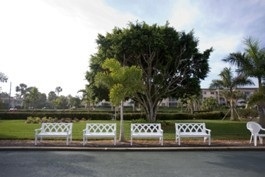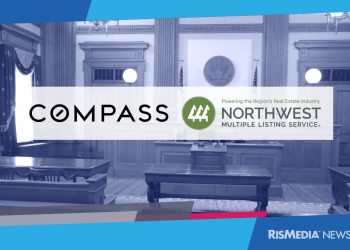 RISMEDIA, January 30, 2010—(MCT)—If your idea of a dream retirement home is a luxury contemporary overlooking a championship golf course in the desert, you better be prepared for some mighty small block parties: When it comes to retirement living, golf courses are out.
RISMEDIA, January 30, 2010—(MCT)—If your idea of a dream retirement home is a luxury contemporary overlooking a championship golf course in the desert, you better be prepared for some mighty small block parties: When it comes to retirement living, golf courses are out.
And Arizona and Florida aren’t the only retirement-relocation hot spots these days. In fact, North and South Carolina now top the preferences of baby boomers who will be retiring in the next decade, according to a survey to be released from home builder Del Webb. “How times have changed when it comes to the golf course,” said Paul Cardis, chief executive of AVID Ratings Co., a survey research firm. His recommendation to builders: Eliminate it. Bike paths and walking trails are the new greens and fairways.
Blame it all on the economy. The recession has taken its toll not only on nest eggs but also on the traditional concept of a retirement home. That’s the message that attendees at the International Builders Show received in a number of presentations and seminars.
Downsizing is a trend that is taking hold among all housing consumers, but it is particularly evident among the 55-plus crowd that includes the older baby boomers. And that downsizing includes housing aspirations in retirement. While “warmer climate” was the reigning factor in choosing where to retire in the first boomer survey Del Webb conducted in 1996, today “cost of living” is the most important consideration on where to locate. Although Florida, Arizona and California remain Top 10 retirement destinations, the trend is giving other states a chance to draw even more retirees.
Despite the broadening of potential destinations, baby boomers’ desire to move in retirement has remained relatively stable over the years. Between 30-40% plan to move to a new home in retirement, about the same as in 1996, and half of those plan on moving to a new state.
What older buyers want in homes
What kind of houses will be in demand among those 55 and older? According to a consumer survey conducted by the National Association of Home Builders, the most important design features that 55-plus buyers want in their homes center on the practical:
-Washers and dryers in their units
-Storage space
-Windows that open easily
-Garage-door openers
-Easy-to-use thermostats
-First-floor master bedrooms
-Private patios
-Porches
-Attached garages
-Bigger bathrooms
A lot of the more popular features in new homes these days don’t appeal all that much to older buyers:
-Island work areas
-Separate showers
-Private toilet compartments
-Sun rooms
-Woodburning fireplaces
-Exercise rooms
But a number of items that home buyers don’t find to be of much interest are much more popular with older buyers:
-Bathroom aids such as grab bars
-Kitchen aids
-Light home-repair services
-Outdoor maintenance services
-An entrance without steps
-Accessible public transportation
-Wider doorways
-Nonslip flooring
Among technology features, older home buyers tend to act like younger buyers when it comes to the basics: Both groups have a preference for security systems, energy management, structured wiring and lighting controls. But older buyers had little use for home theaters, distributed audio or home automation, more-expensive items that younger buyers do like. “These older buyers are frugal, probably on a fixed income and so expensive tech items are not that big on their lists,” said Rose Quint, the NAHB assistant vice president for survey research.
The emphasis on services related to home and community is an important one that cuts across many age groups, said John Migliaccio, director of research at MetLife’s Mature Market Institute, which surveys consumers and builders on retirement issues. “Very telling is that the younger group of mature consumers reported enthusiastically that they want services like home maintenance and repair as part of their next home purchase, along with services usually connected to older householders, such as housekeeping, onsite health care and transportation,” he said.
According to Migliaccio, all of those items were ranked higher than the desire for social activities by this group—a surprise given that social activities and amenities have been thought to be valued highly by this group. He said the data support an emerging trend among builders to look for ways to partner with providers of such services to the residents of their active adult/lifestyle communities.
Migliaccio also predicted that universal design—which includes features such as wider hallways, lever-handled doors, roll-in showers and no-stair entries—will catch on as baby boomers watch their own parents age. “The boomers are going to see their own parents age without it and they won’t like what they see,” he said.
The 55-plus age group represents 38% of all U.S. households and is projected to rise every year to be almost 45% of households by 2019. And that group has high homeownership rates: while the U.S. as a whole has about a 67% ownership rate, those 55 to 74 own homes at an 80% clip. “Most buyers in this market are looking for an easy-living lifestyle. They would like easy access to services that will free up their time from maintenance both inside and outside their homes,” said Mike McGowan, a 50-plus builder from Binghamton, N.Y. and chairman of the National Association of Home Builder’s 50-Plus Housing Council. “This data tells builders that the homes they build for older active adults will remain attractive to the consumers who will be entering that market for the foreseeable future.”
(c) 2010, MarketWatch.com Inc.
Distributed by McClatchy-Tribune Information Services.










